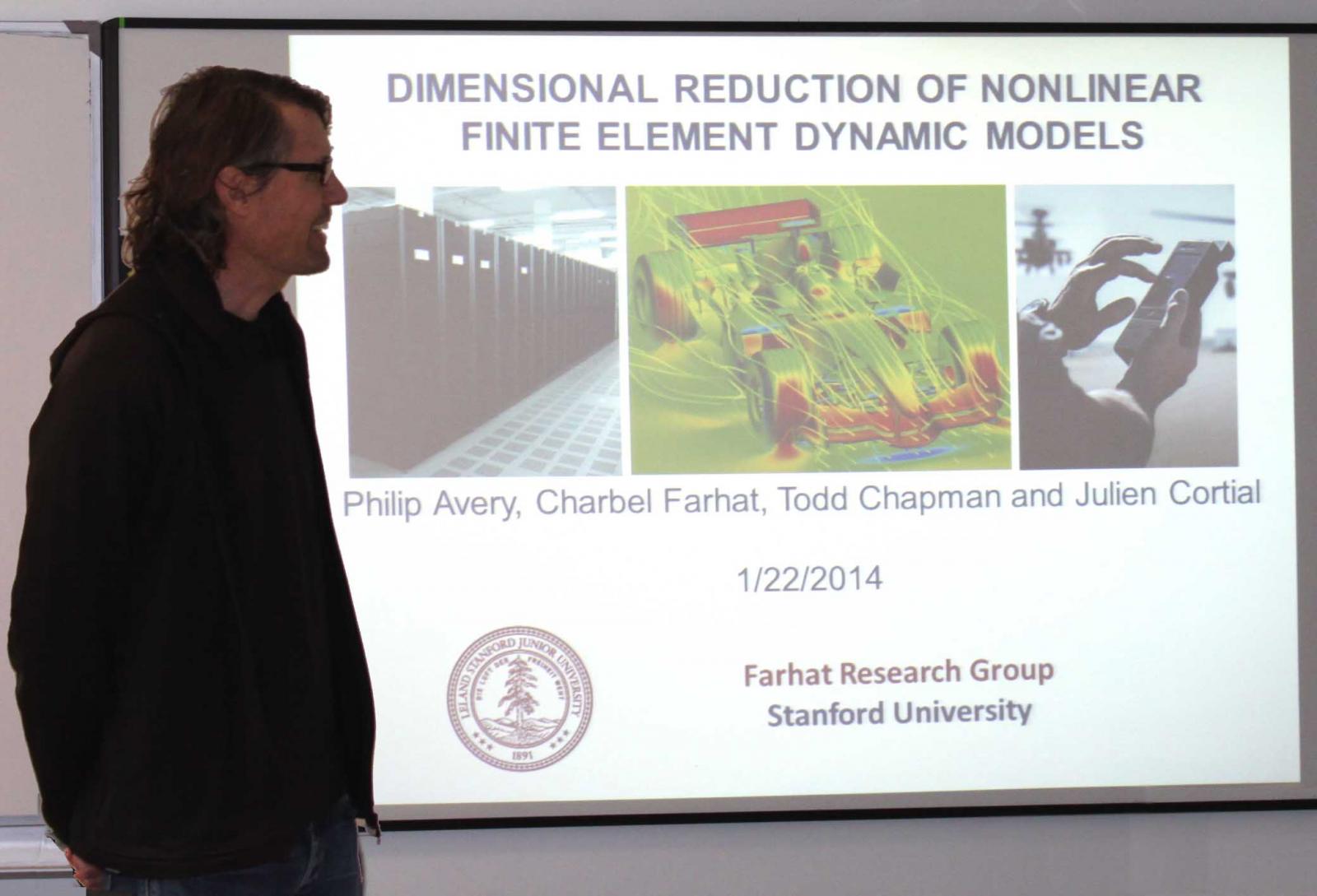Dimensional reduction of nonlinear finite element dynamic models featuring a hyper reduction method based on element sampling and weighting for computational efficiency
At Cnam, Paris, January 22nd 2014, 2 p.m.
Philip Avery
Senior Research Engineer, Farhat Research Group, Stanford University, California, USA

A computational framework for the dimensional reduction of high-fidelity, nonlinear, finite element structural dynamics models will be presented. It is based on the pre-computation of solution snapshots, their compression into a reduced-order basis, and the Galerkin projection of the high-dimensional model onto this basis.
Like most projection-based nonlinear model reduction methods however, its computational efficiency hinges not only on the ability of the constructed reduced-order basis to capture the dominant features of the solution of interest, but also on the ability of this framework to compute fast and accurate approximations of tangent matrices and/or force vectors. The computation of the latter approximations is often referred to in the literature as hyper reduction. Hence, a hyper reduction method for nonlinear, finite element structural dynamics models will also be presented. Based on element sampling, the proposed method is natural for finite element computations and preserves important properties of the high-dimensional finite element model to be reduced. Equipped with this hyper reduction procedure, the aforementioned Galerkin projection framework will be first demonstrated for several academic but challenging problems.
Then, its potential for the effective solution of real problems will be highlighted with the realistic simulation of the transient response of a vehicle to an underbody blast event. For this problem, the proposed nonlinear model reduction framework reduces the CPU time required by a typical high-dimensional model by up to four orders of magnitude while maintaining a good level of accuracy.
